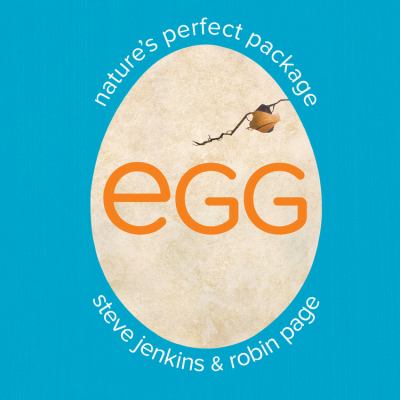
by by Robin Page
Book list This attractive volume looks at animals that lay eggs, the qualities of those eggs, and how the parents protect, package, carry, and incubate them. Presented on two-page and four-page spreads, each topic begins with a brief discussion, several pictures showing different species, and informative captions. This approach offers a sense of the many, varied, and sometimes surprising ways that species have developed to deal with common issues. For example, where do they lay their eggs? Yes, a nest (cowbird) is one option. But so is a bare branch (white tern), water (horned starfish), a carnivorous pitcher plant (black-spotted sticky frog), or a spider's abdomen (spider wasp). Near the end of the book, parallel panels of illustrations show a chicken and an alligator developing inside their respective eggs. Created from cut and torn papers with interesting coloration and textures, Jenkins' distinctive illustrations show up well against the white backgrounds. This intriguing presentation will be an asset to many kindergarten and primary-grade classes.--Phelan, Carolyn Copyright 2010 Booklist From Booklist, Copyright © American Library Association. Used with permission. School Library Journal Gr 2-4-Jenkins and Page present a collection of facts about animals and their eggs. The layout is divided into spreads that present a different topic ("Where should I lay my eggs?" "Egg Packaging") in an introductory paragraph. That's followed by several examples ("Incubation" describes the male emperor penguin, which keeps eggs warm in a brood pouch), accompanied by beautiful illustrations rendered in Jenkins's trademark cut-and-torn paper collages, scattered across the page, leaving the copious amount of white space characteristic of this team's style. Some cases tend toward the grotesque (readers learn that the spider wasp stings a spider, lays her eggs on its body, and leaves it as food for her hatchlings), but all are presented in a purely scientific, factual tone. A diagram at the beginning of the book gives readers a look at the actual sizes of different eggs (a tarantula's, a leopard frog's, a scorpion fish's). The work concludes with cross-sectional diagrams of chicken and alligator eggs, showing the interior at different stages of development. There's also a list of very brief facts about each of the animals pictured. VERDICT Like Jenkins and Page's other works, this delightful purchase combines big, bold illustrations with intriguing science. A solid addition to the 590s.-Jill Ratzan, I. L. Peretz Community Jewish School, Somerset, NJ © Copyright 2014. Library Journals LLC, a wholly owned subsidiary of Media Source, Inc. No redistribution permitted. (c) Copyright Library Journals LLC, a wholly owned subsidiary of Media Source, Inc. No redistribution permitted. |


